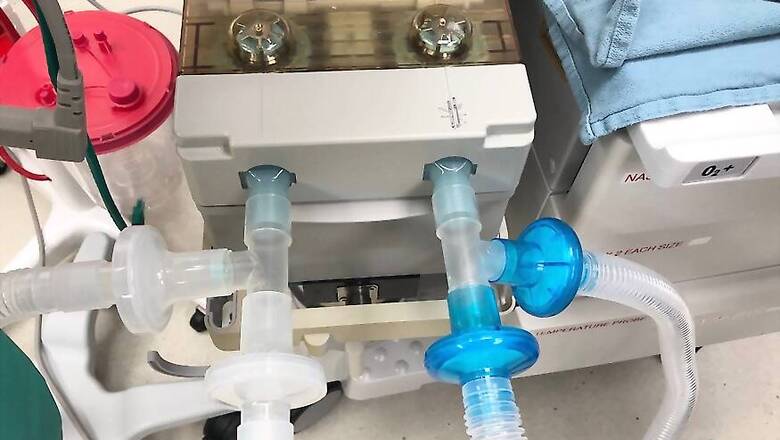
views
The title of the 2009 song Just Breathe by American rock band Pearl Jam could not be more relevant to any other era than the times we live in today.
Covid-19, which has accounted for more than 170,000 deaths across the world, closed down economies and literally got the globe to a standstill, is essentially an infectious disease which can lead to respiratory failure and death.
Thus, while the best minds in science and technology develop the drugs and the vaccines, at the very basic level, what is leading the fight against the novel coronavirus in hospitals around the world is medical oxygen.
It is quite literally the lifeline and saviour of critical patients around the globe.
While 80% of the patients report mild symptoms or are asymptomatic, the remaining 20% do need oxygen support and in extreme cases the use of ventilators.
Recognising the need of immediate availability of medical oxygen for severe and critical Covid-19 patients in India, the union health ministry issued guidelines to the states on the methods of supplying oxygen to the medical facilities handling Covid-19 patients. The letter dated April 1 included a list of 17 medical oxygen gas manufacturers/refillers/suppliers, 7 cylinder manufacturers for medical oxygen and 4 manufacturers of liquid oxygen under the umbrella of the All India Industrial Gases Manufacturers’ Association (AIIGMA) – the national representative body of industrial gas manufacturers and allied industries in India comprising members from public and private sector industries.
AIIGMA started in the year 1975 and has over 270 members including all leading gas manufacturers in India and abroad who have a direct interest in the Indian gas industry. Members of AIIGMA manufacture and supply 95 per cent of India’s requirement of medical oxygen.
Some of the major manufacturers of medical oxygen include Linde India Ltd, Praxair, Inox Air Products Pvt Ltd, Vinayak Air Products Pvt Ltd, Goyal MG Cases Pvt Ltd, Raigad Carbides, Universal Air Products, Manorama Gases and Hitech Industries.
Everest Kanto Cylinders Ltd, Euro India Pvt. Ltd and Luxfer Uttam India are some of the manufacturers of cylinders for medical oxygen while Inox India Ltd, Chart VRV and Shell-n-Tube Pvt Ltd are the manufacturers of liquid oxygen.
In India, the Ministry of Commerce and Industry and the Central Drug Standard Control Organization (CDSCO) regulate the medical gases. A task force set up by the ministry for ensuring readiness and availability of medical oxygen consists of officers from Department for Promotion of Industry & Internal Trade, Petroleum and Explosives Safety Organisation (PESO), CDSCO and AIIGMA.
The Ministry of Home Affairs and Family Welfare and the Drug Controller General of India have taken several measures to ensure the readiness of medical oxygen during the Covid-19 pandemic in India. These include allowing industrial manufacturers to manufacture oxygen for medical use without compromising on permissible impurities. This is widely being hailed as a masterstroke by the Indian government. Not only will it meet the challenges of shortage of medical oxygen but also cater to patients in remote areas.
Saket Tiku, president, AIIGMA, said, “The government of India has accepted the proposal put forth by AIIGMA that aligns the oxygen manufacturers and puts national interests first, for the adequate availability of oxygen to fight the Covid-19 pandemic. On behalf of all our member companies, I would like to express our heartfelt gratitude for proactive and innovative measures taken by the inter-ministerial task force and for reposing faith in the industry for fulfilling the critical demand of medical oxygen.”
The central government has allowed manufacturers of medical oxygen gas/liquid oxygen, medical oxygen gas cylinders, liquid cryogenic cylinders, liquid oxygen cryogenic transport tanks, ambient vapourisers, cryogenic valves, cylinder valves and accessories to manufacture and transport their products during the lockdown. This has helped ensure that our hospitals and isolation wards have enough supply of medical oxygen.
Among other measures, PESO has extended the validity date of licenses for transportation of oxygen to the end of June. The Central Medical Services Society (CMSS), has also invited bids for procurement of medical oxygen cylinders on an urgent basis.
According to Saket Tiku, India has enough supply of oxygen in stock. The demand has gone down post the advent of Covid-19 by at least 20-25% as most non-essential surgeries have been deferred. The lockdown has also meant that supply to the industry has been reduced which in turn implies that more gas is available to be converted to medical oxygen. He added that India currently has 80,000 tonnes of oxygen in stock while consumption of medical oxygen is approximately 700 tonnes per day.
But the government and industry are preparing for contingencies.
“We are trying to work on the supply chain so that we can cater to all hospitals. We are working on all three means of transporting--pipeline, cylinders and the cryogenic tanks for liquid oxygen. As of now, we have a capability, but we are continuously engaging with the government to monitor the changing needs,” Tiku said.
According to Gasworld, the leading publication in the world for the industrial gas sector, there was no shortage of medical oxygen in Europe and America during Covid-19. Europe’s liquid oxygen capacity amounts to 31,000 tonnes per day. The demand for medical oxygen is 3,150 tonnes per day which is 10% of total capacity. Growth predictions of the virus may create the demand for another 7%, but even if the demand triples, there is enough supply to meet the challenge.
“The amount of oxygen can hardly be a problem. Any shortage might be caused by the delivery system, which can serve as a bottleneck between producers and patients,” stated Karina Kocha, business intelligence manager, Gasworld.
Oxygen is the largest revenue generating industrial gas in India. Also, only 14% of the reported cases need medical oxygen and given the low number of cases in India (compared to Europe and USA) and with the rate of growth only slowing down post the stringent lockdown, the country need not panic.
Gasworld also states that in most circumstances, ASUs (air separation plants) tend to operate at around 75-85% of their maximum capacity. This means that in the context of any significant outbreak of Covid-19, the output of oxygen can be increased without the need for creating new plants.
Meanwhile, India continues to devise new innovative ways to meet the challenges of any future medical oxygen emergency. The naval dockyard in Visakhapatnam has designed an innovative 'Portable Multi-feed Oxygen Manifold (MOM)' using a six-way radial header fitted to a single cylinder. This innovation would enable one oxygen bottle to supply to six patients simultaneously.
While India may not fall short in supply of medical oxygen, it does need to increase the number of ventilators available in the country.
Carmakers such as the Mahindra Group, Maruti and Hyundai India have joined in the production and are partnering with ventilator manufacturers like AgVa Healthcare, LifeLineBiz, Narang healthcare among others. India plans to produce 50,000 ventilators per month by the end of May.
AgVa has started producing portable toaster-sized ventilators which are five times cheaper than the conventional ventilator and can be used extensively for the not so critical patients. BHEL will be manufacturing 30,000 ventilators in the coming months while Central Electronics – a solar cell manufacturer – will also be producing ICU ventilators to fight the virus in India.
But the question remains, how many ventilators will India need?
The answer to this million-dollar question varies as experts differ on what would be the ‘Covid-19 worst-scenario’ in India on which depends the strategy to increase the supply of this life-saving machine.
While the Indian Council for Medical Research, the country’s apex body in this field, predicts that India may need thousands of ventilators; other experts say the number may run into several lakhs.
Ashutosh Raghuvanshi, managing director and chief executive of Fortis Healthcare, said, “Definitely there will be a shortage of ventilators in case the outbreak goes to a level it has gone to in some other countries.”
The Public Health Research Organization, based in Washington and New Delhi, estimates that India will need 1 million ventilators when the virus hits its peak in the country.
But there are two problems with such analyses and estimates – firstly, they assume that India will be affected as badly as most western European countries and USA – when all other indications and factors (current number of cases/heat/mortality/stringent lockdown) suggest that it won’t. Secondly, their modelling estimates for India are again based on western Europe and America data, not taking into account the peculiarity and the behaviour of the virus in India.
Ventilators are required in acute cases which roughly make up 5% of the total affected cases. India, at the end of March, had around 40,000 ventilators. This would mean that the total number of reported cases would need to touch 8,00,000 for all these 40,000 ventilators to be put for Covid-19 use. India currently stands at approximately 19,000 reported cases.
With a stringent lockdown and other containment measures, it may take a few months for India to reach that figure (if at all), during which, the country would have produced several thousand more ventilators to fight the virus.
Unless there is a drastic exponential rise of acute cases in India, of which there are presently no indications, ventilator supply and production in the country should remain ahead of the demand curve.











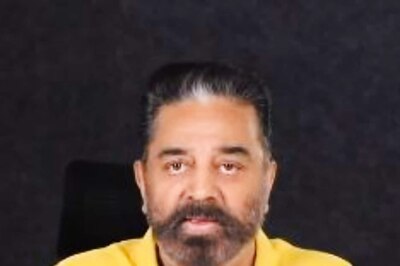

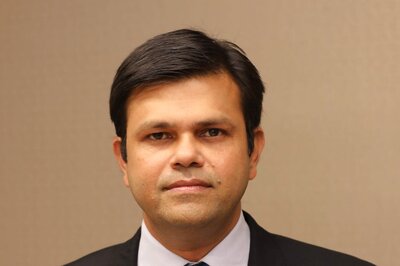
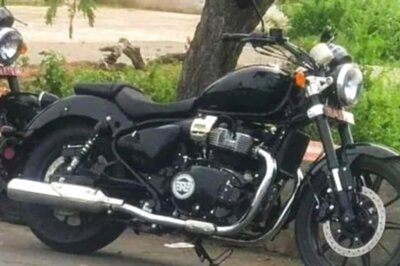
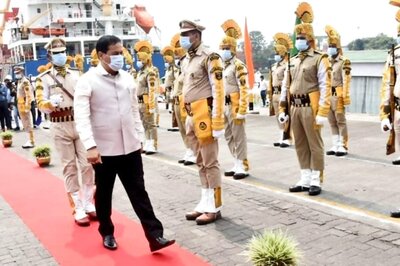


Comments
0 comment